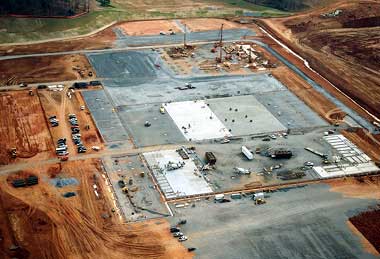on-Way Transportation, a US$2.6-billion freight forwarding and logistics specialist based in Ann Arbor, Mich., has a vast and growing portfolio. The company employs nearly 20,000 and operates about 28,000 trucks, tractors and trailers with about 450 facilities of various sizes and functions.

Bill Giles, Con-Way’s national pre-construction coordinator, sets things in motion for projects in the company’s $200 million capital program. Construction runs the gamut from a relatively small $50,000 remodeling of company facilities up to a new $12-million motor freight complex that includes dock space and offices.
“Most of our projects aren’t large, but they’re repetitious,” Giles says.
For about four years, Con-Way has been using e-Builder, a Ft. Lauderdale, Fla.-based provider of Web-based technology for construction management and facility operations. Hines says Con-Way uses e-Builder to disseminate information to various parties involved in a project, retrieve information and track the status of projects.
“We use it for information management within the traditional triad of owner, architect and contractor, and also with subcontractors,” Giles says, adding that e-Builder is a great tool for improving communication.
 |
| Design-build firm James N. Gray is using e-Builder to monitor construction progress of the Toyo Tire North America plant being built in Bartow County, Ga., about 50 miles (81 km.) northwest of Atlanta. |
James N. Gray, a Lexington, Ky.-based engineering and construction firm, also uses e-Builder to help it be an online project honcho. Gray focuses on industrial construction and its current projects include the $392-million, 900-worker Toyo Tire North America plant now going up in Bartow County, Ga. The company has cultivated a special relationship with Japanese firms, having built about 250 facilities for them over the past 20 years, says Randolph Wilson, Gray’s director of technologies.
Gray has been using e-Builder for about a year for tasks such as posting engineering documents for customers to download, review, make comments and re-post.
“We then make the design changes or the customer can simply approve the documents,” Wilson says. “It allows online collaboration with subcontractors and vendors. We can literally pull in the design team, even if they’re located around the world, and have a design meeting without leaving the office. E-Builder has a good look and feel, is very intuitive and the company offers great support. It performs our intended function exceptionally well. They add functions all the time like a custom form process and photo management.”
Wilson says Gray chose e-Builder after a thorough evaluation of a number of service providers in the field. That field has narrowed to a handful over the last few years with e-Builder being one of about a half dozen major providers still standing.
Jonathan Antevy founded e-Builder in 1995 and is the firm’s CEO. The company is a pioneer in development of online construction management technology.
One of the latest enhancements to e-Builder’s capabilities is one Antevy calls “intelligent faxing.” He says the concept is a solution for about 20 percent of e-Builder users who have some issue with going online, whether it be lack of Internet skills or simply not having access while in the field.
“What we’ve done is create the capability to fax information from a fax machine and have it show up online in the appropriate place within e-Builder. That’s different from other systems that throw the information all into one folder. We’ve added a bar code onto the fax cover page. It’s uniquely generated by the system. It’s the biggest old technology that has been reinvented. We have about 20,000 pages per month that come into the system.”
|
Most upgrades to e-Builder have been client-driven, Antevy says, adding that new releases take time to develop correctly.
“Wireless integration is an area we hear a lot about from our clients and we are working on it. Using a Blackberry with the system is one concept we’ve talked about for quite some time. We’re always refining reporting aspects and adding modules. Facility maintenance is an area where we’re making headway.”
Most e-Builder users sign on for a yearly contract or for a multiple-year contract depending on the duration of the construction program. Antevy says the cost depends on what services the user receives.
“Usually we put a package together based on what modules they use and how many people are involved,” Antevy says.
Training clients to use the system can take from two days to two months, depending on the size of the client and the project. But Antevy says it’s generally easy to get started.
“We spend quite a bit of time up front doing quite a bit of hand holding,” he says. “At the end of the day, these systems do what the project teams want them to do.”
